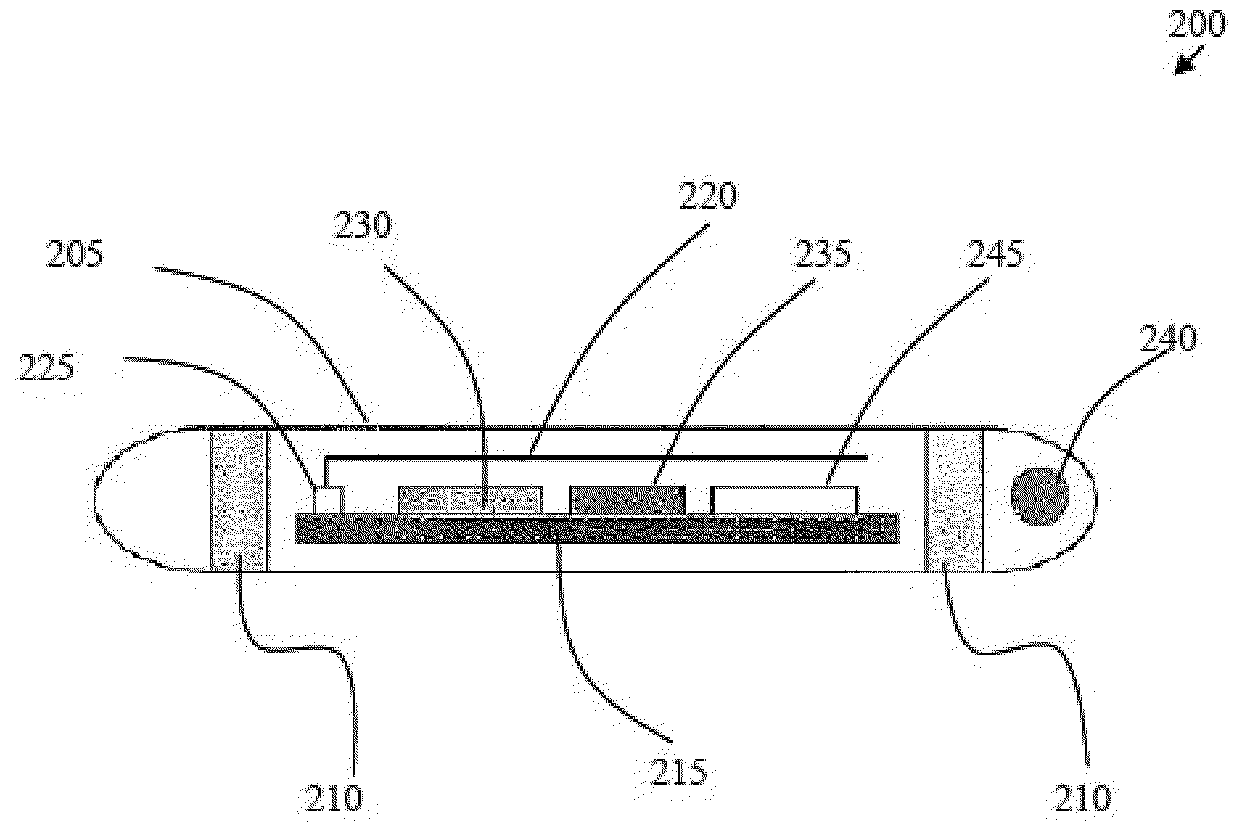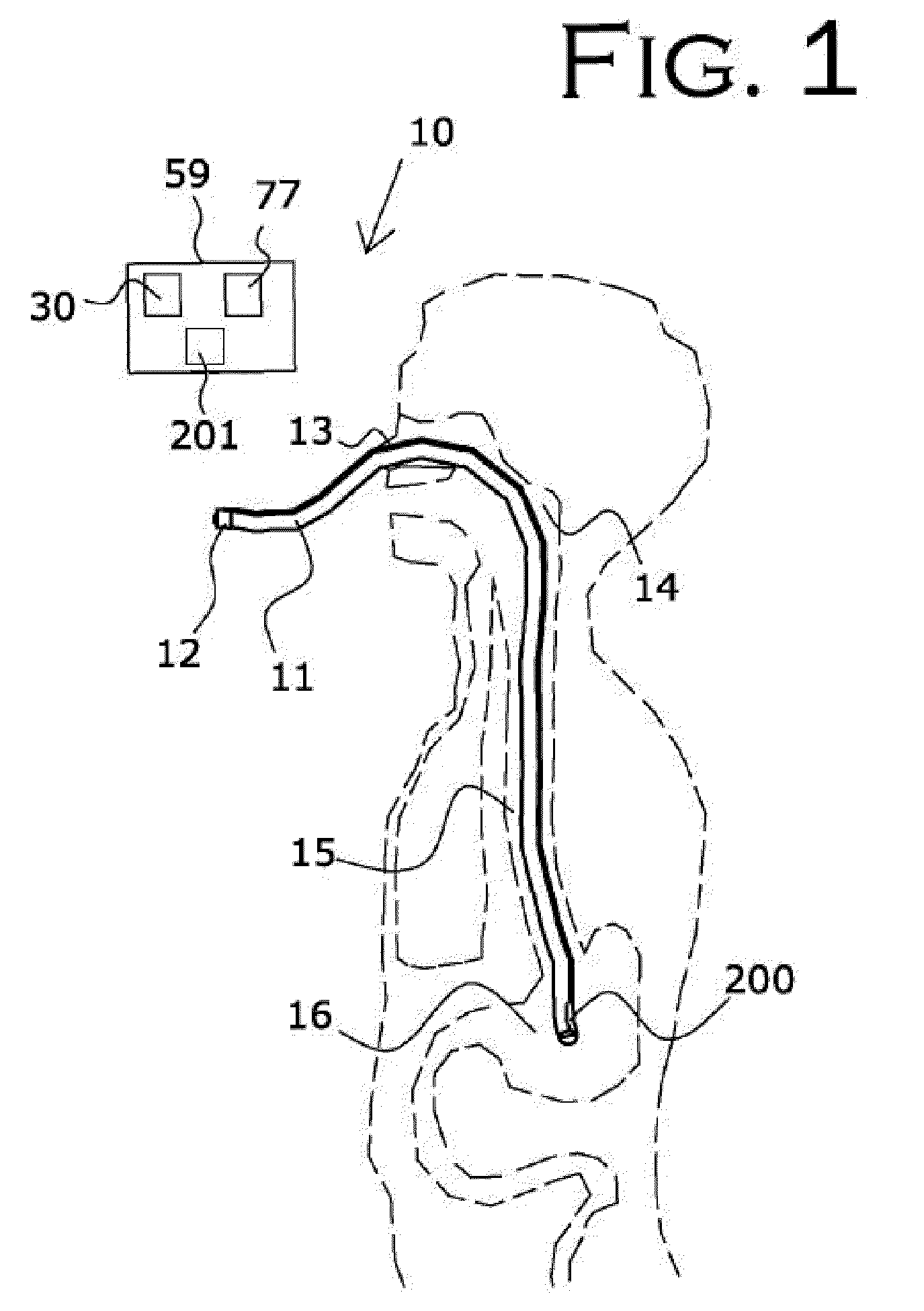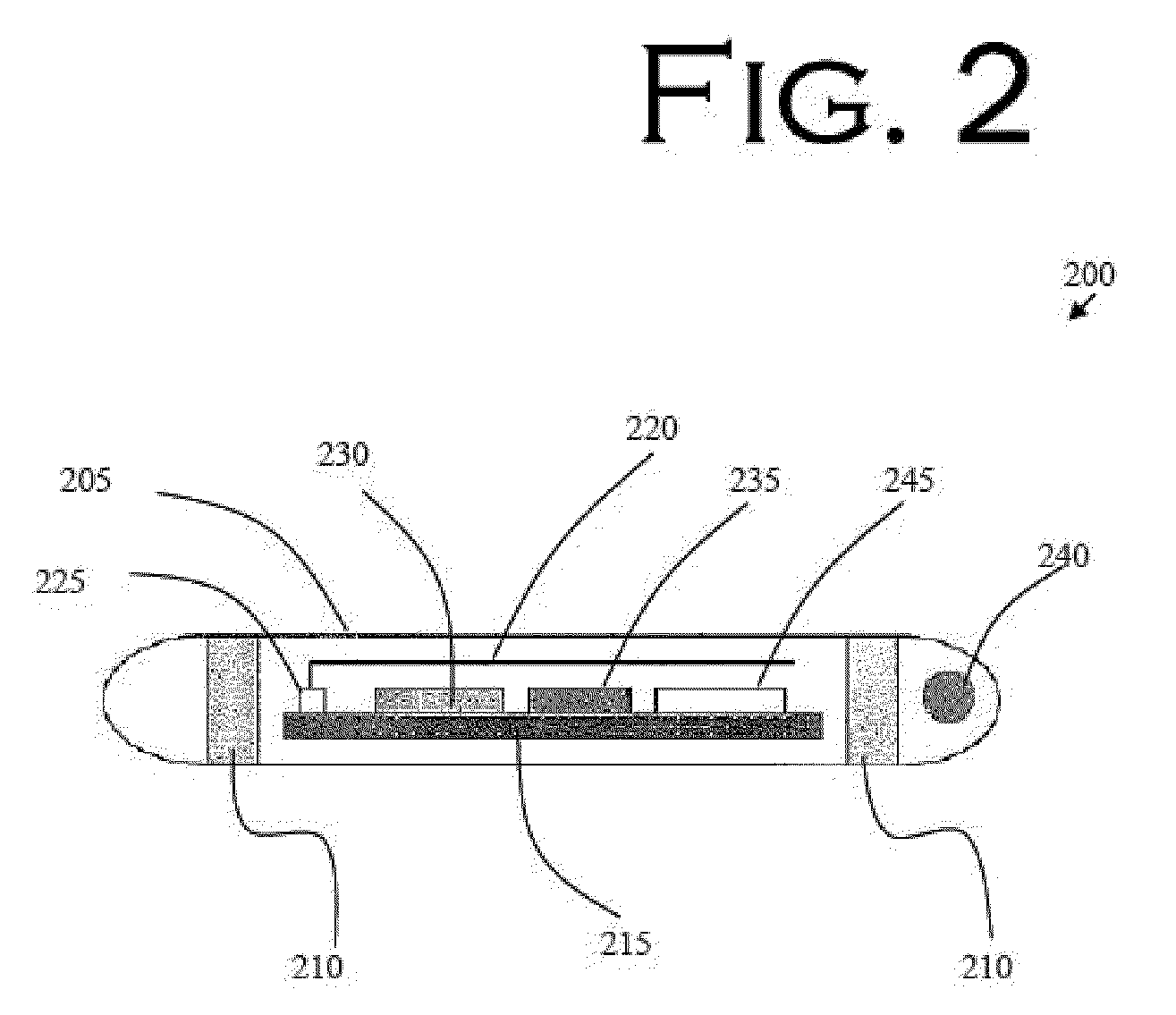Medical Device Placement and Monitoring System Utilizing Radio Frequency Identification
a technology of radio frequency identification and placement of medical devices, applied in the field of medical devices, can solve the problems of increasing the difficulty of health care providers in ensuring proper placement of either nasogastric or endotracheal tubes, numerous health problems for patients, and aspiration by proxy, and achieve the effect of improving staff efficiency
- Summary
- Abstract
- Description
- Claims
- Application Information
AI Technical Summary
Benefits of technology
Problems solved by technology
Method used
Image
Examples
second embodiment
[0093]In a second embodiment, shown in FIG. 7 and FIG. 8, an audio monitoring circuit is illustrated, with the flowchart of FIG. 8 illustrating an overview of the operation of the audio monitoring circuit. The feedback initiator within the RFID tag 200 at the distal end of flexible tube 11 is an acoustic port 20b or opening using tube 11 as a means for sound to travel to the microphone 32 on the proximal end of tube 11, FIG. 7.
[0094]Feedback initiator 20 in the second embodiment preferably comprises a microphone 32 to receive the sounds from the distal end of flexible tube 11 configured with the appropriate amplifiers to amplify the received sounds and the appropriate circuitry to transmit the sounds via an RF transmitter to the speaker 38 which is configured with the appropriate circuitry to generate an audible sound that can be heard by the clinicians. The speaker 38 serves as a notifying device that provides the clinician with information concerning the distal end of flexible tub...
third embodiment
[0096]Illustrated in FIG. 9 and FIG. 10 is a third embodiment, an air pressure circuit to monitor air flow so that the attending clinician can ascertain whether the nasogastric tube is located in the airway or not, either during intubation or after intubation. The feedback initiator connected to the proximal end of flexible tube 11 is an air pressure sensor 20d. The air pressure sensor 20d is configured to measure the pressure or airflow of the air at the distal end of flexible tube 11. The detected air pressure data is transmitted to the feedback receiver, air pressure monitor 30d via an RF signal communicated from an RF transmitter at the proximal end of tube 11 to the feedback receiver, air pressure monitor 30d. Air pressure monitor 30d is configured with the appropriate electronics to receive the information from the air pressure sensor 20d, to analyze the information to determine if the information is appropriate for the organ of interest, and to send a signal to activate the n...
first embodiment
[0101]Air pressure sensor 20d then takes readings and transmits the resultant data back to the feedback receiver via an RF signal as described in association with the The feedback receiver, an air pressure monitor 30d, is configured with the appropriate circuitry and electronics to receive the RF signal transmitted from air pressure sensor 20d and to analyze it. If the air pressure reading is appropriate 41 for the organ of interest, the air pressure sensor 20d merely continues to monitor the air pressure.
[0102]If the air pressure reading is inappropriate 42 for the organ of interest, the feedback receiver 30d causes the notifying devices to be activated. Warning buzzer 18 emits an audible alarm and / or the warning indicator light 19 is lighted, thus producing a visual and auditory signal and notification to the clinician of the problem. These may automatically reset after a given amount of time, or alternatively, as shown, they may be manually reset when the clinician depresses res...
PUM
 Login to View More
Login to View More Abstract
Description
Claims
Application Information
 Login to View More
Login to View More - R&D
- Intellectual Property
- Life Sciences
- Materials
- Tech Scout
- Unparalleled Data Quality
- Higher Quality Content
- 60% Fewer Hallucinations
Browse by: Latest US Patents, China's latest patents, Technical Efficacy Thesaurus, Application Domain, Technology Topic, Popular Technical Reports.
© 2025 PatSnap. All rights reserved.Legal|Privacy policy|Modern Slavery Act Transparency Statement|Sitemap|About US| Contact US: help@patsnap.com



